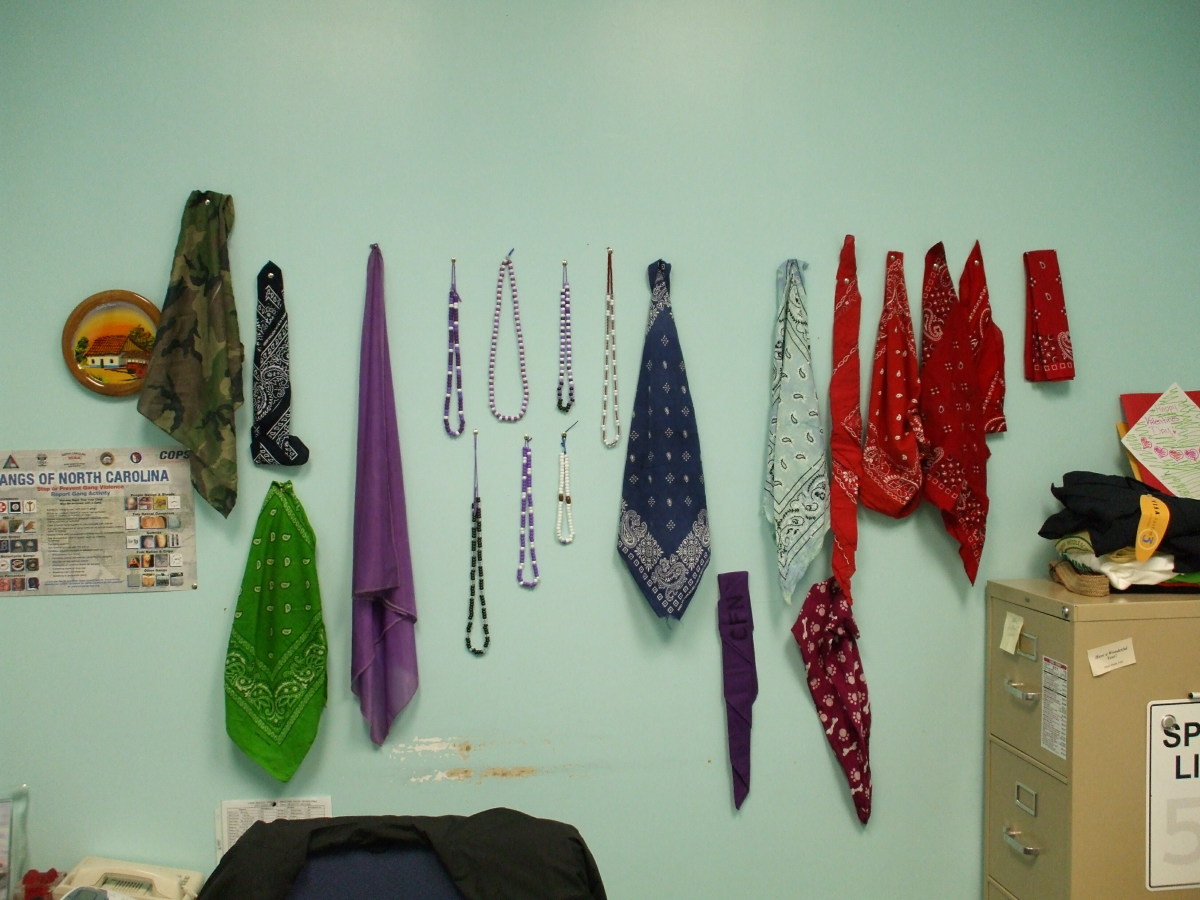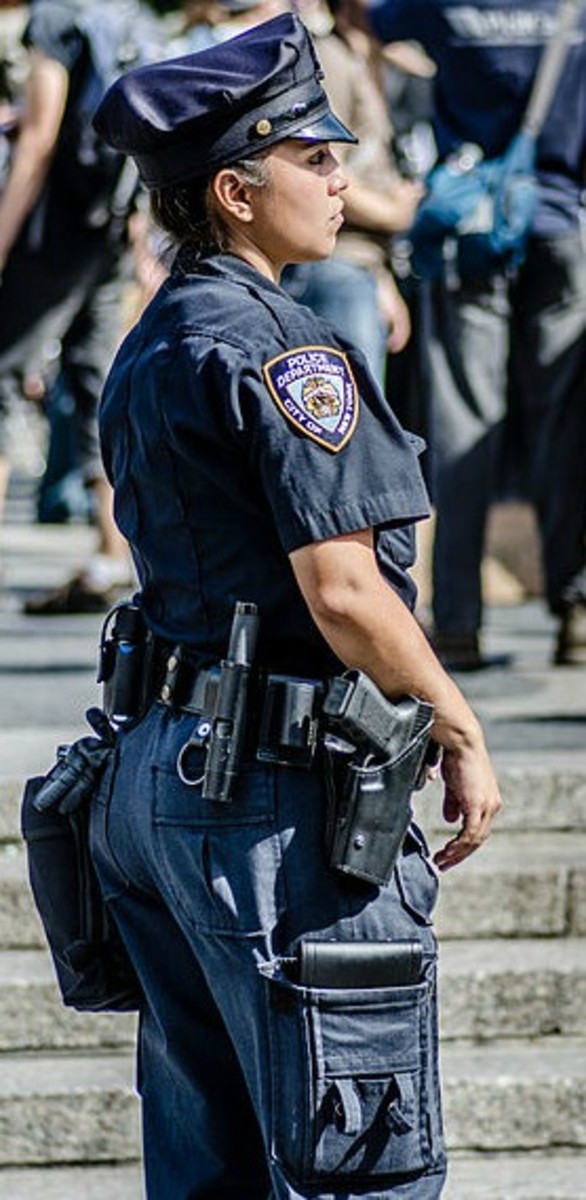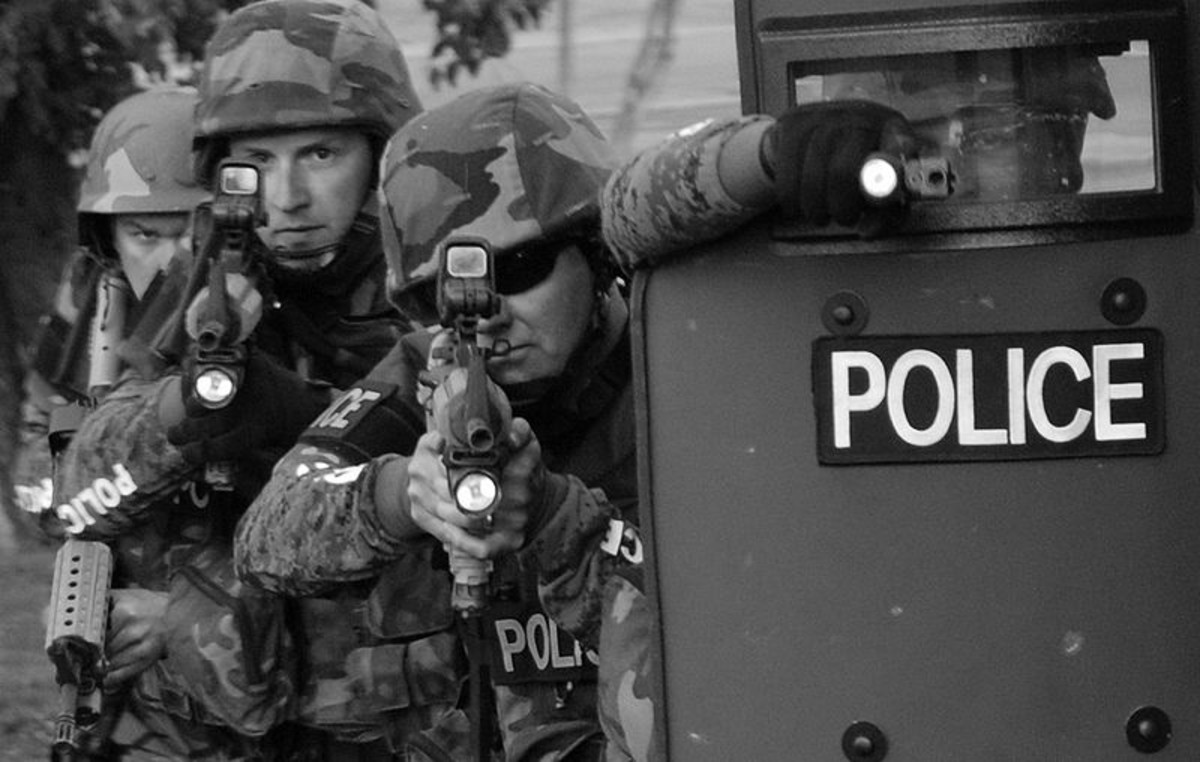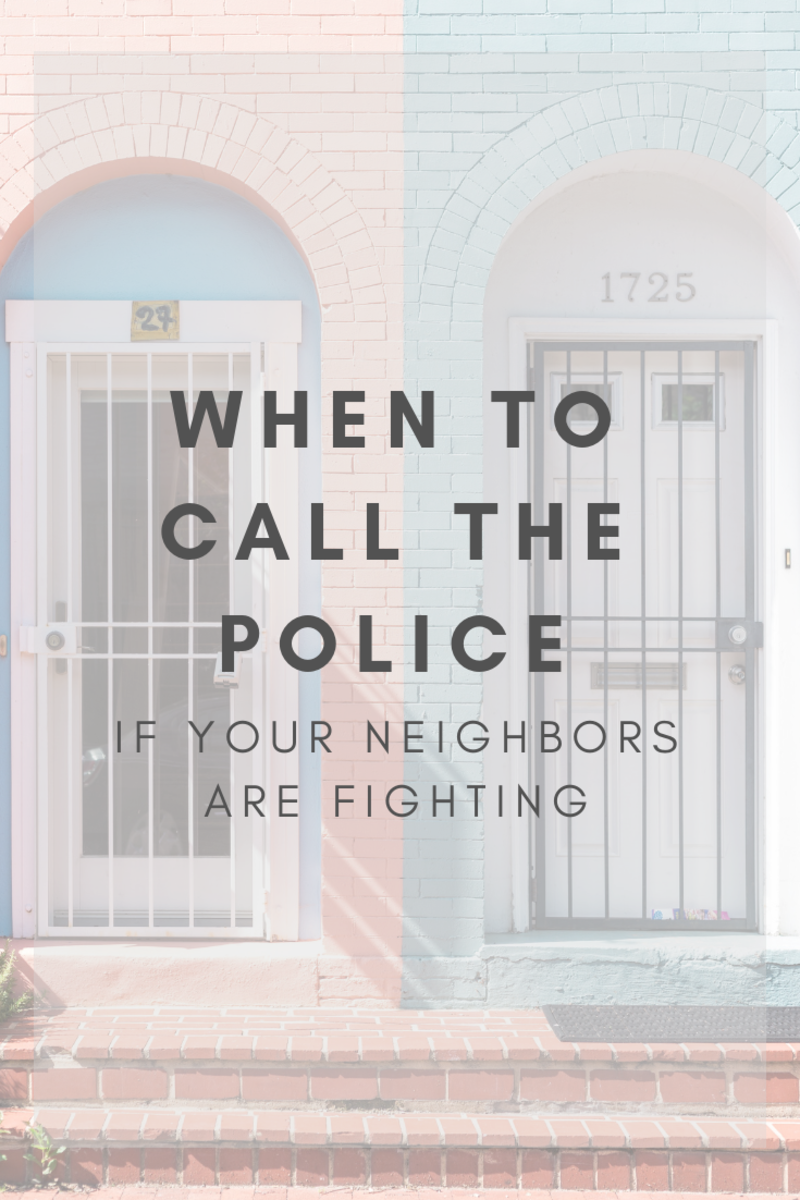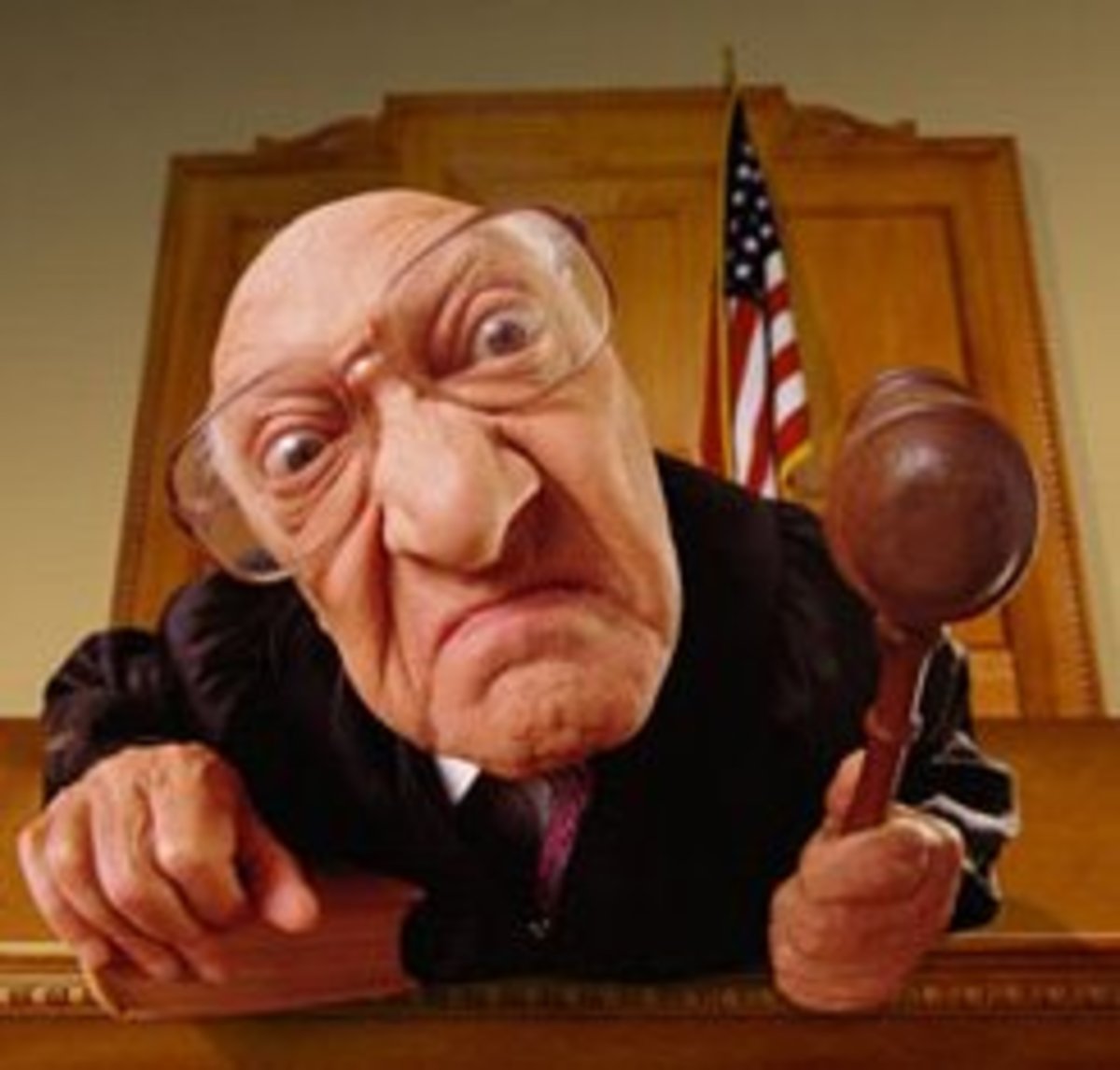To Punish and Arrest: The Rapid Militarization of American Officers
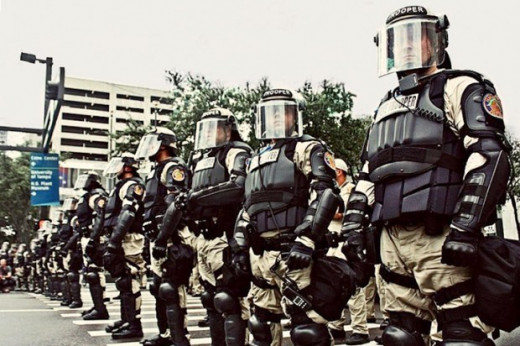
A Night Cap
The sun has yet to rise as fierce knocks are heard on your front door. Barking and shouting ensues as you jump from your bed in utter shock.
You stumble through your home as you fight to gather your senses. You hear glass shattering and something thumps to the floor. You turn the corner just as a violent explosion sends you backward into a wall.
Your eyes are burning from the flashing sensation from the explosion and your ears are pounding.You crawl around the corner, your head spinning. You struggle to peer through the cloud of dust and debris, and you watch as sections of your sofa smolder.
Suddenly the frame of your front door falls apart with a crack and you watch it crash inward with a battering ram.
Armed men in black protective gear step over the collapsed door and aim their weapons at you, screaming to put your hands up. You throw your arms in the air, shock and fear rising to the surface.
It takes seconds for them to cross the room. Two men grab your arms and force you face-down into the floor. A knee is pushed into your back and you cry out in pain as they twist your arms and forcibly zip-tie your wrists behind you.
You scream at the men, asking what they want, and who they are. The knee presses deeper into your back and shrieks of pain replace your words. You can hear the men ferociously rummaging through your rooms. You cry out again, screaming to know what they want.
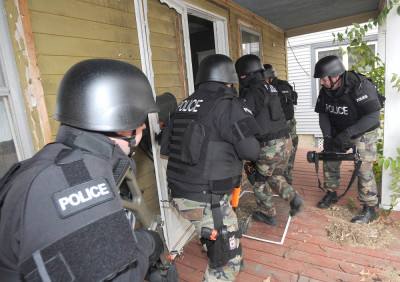
Two of the men drag you to your feet. They have protective helmets with visors so you can barely see their faces. They toss you against the wall and point their guns at you. You shrink back, frantically screaming that they don't shoot.
Another armed man comes from your bedroom, your laptop in hand.
“We're taking this as evidence,” he says through the helmet as he passes it off to yet another man sporting an M-16. More armed men storm in and begin ravaging your home.
They flip the cushions on the smoking sofa, then they lift and tip it over. The two men in front of you grab you under the arms and haul you outside. German shepherds growl and bark as your stumble over the remains of your door. You risk a glance to the left to see that your neighbors are quickly being herded out of their home as well, but nowhere near as roughly.
You see dozens of vehicles on the street. Lights are flashing, throwing shadows everywhere. An armored tank is rolling heavily towards your home. You catch a glimpse of the symbol on one of the vehicles and you can't comprehend what you're seeing.
It's the local police. Officers. Cops. There's a SWAT Team personnel carrier. A military vehicle is parked in the grass.
This is America. This is called unlawful entry and arrest. And this is happening more and more.
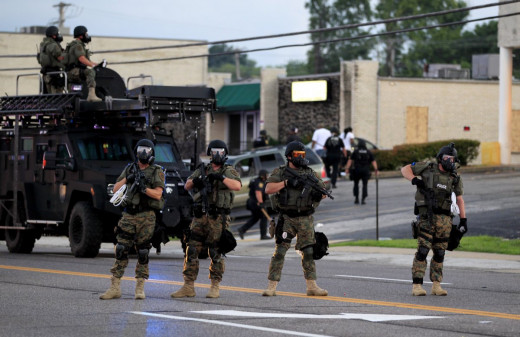
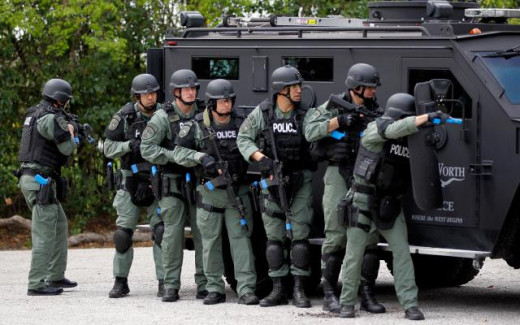
A Brief SWAT History
Special Weapons and Tactics (SWAT) teams were established out of necessity during the mid 1960s.
A violent hostage situation took place at the University of Texas at Austin on August 1, 1966. Charles Whitman was a U.S. Marine with commendable sharpshooter skills. He used his military training to murder fifteen people and wound 31 others from the Texas Tower observation deck. The police were a poor match to combat the force Whitman welded in the tower, although they were victorious in stopping the sniper.
Riots were prominent in the 1960s as the civil rights movement and protests against the Vietnam War grew in many cities throughout the country. The Los Angeles Police Department and the Los Angeles County Sheriffs Department developed the first tactical teams in the latter half of 1966 to resolve incidents and conflicts with high risks, like the situation in LA with the Black Panther political party in 1969.
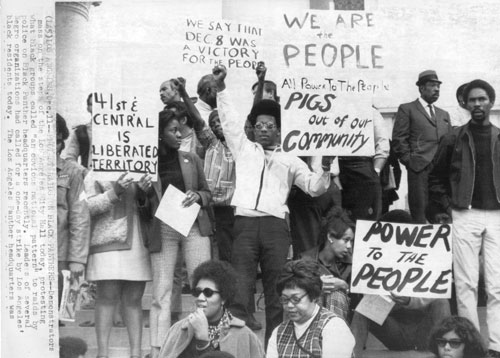
Police officers are specially selected by their departments for SWAT training. This training includes team organization and structure, covert tactics in individual and team operations, proper clearing and searching of rooms and classes on negotiation strategies.
They are taught how to confront heavily armed criminals and how to perform high risk arrests. They learn various field training exercises. They are trained on how to deal with chemical agents as well as when to utilize tools like stun grenades, mace and other riot control devices and when to use lethal force.
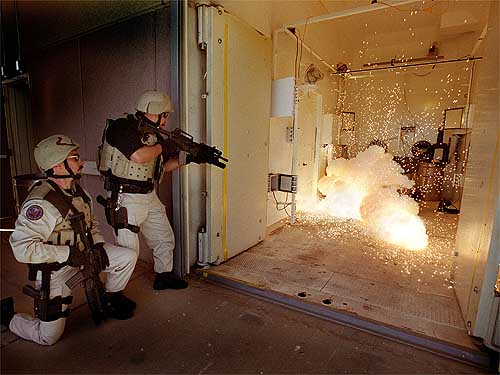
The Drug Wars
In the early 1980s, the Reagans officially declared war on drugs. SWAT operations were used to arrest dealers in the cocaine, crack and heroine businesses as deadly violence surrounding these drugs was on the rise. Marijuana was viewed as a recreational drug in the 1960s and 70s, but changed in the 1980s as federal campaigns pushed policies against all drug use, users, growers and sellers.
Zero tolerance policies were followed by local policing agencies. The incarceration rate exponentially increased from the beginning of the 80s into the 90s, with numbers jumping from 50,000 inmates to over 400,000 by 1997 for nonviolent drug-related offenses.
Police departments all over the country are developing their own SWAT and strategic response teams. They are actively advertising them to interested candidates to increase their numbers. Now these teams are being used more and more to issue drug warrants, arrests and searches, more often on marijuana users and small-time pot dealers.
These operations, now being called SWAT raids, are generally conducted at night, and they are resulting in more accidents and mistakes than what the public may actually know.
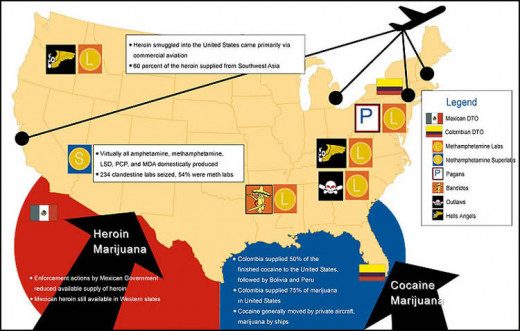
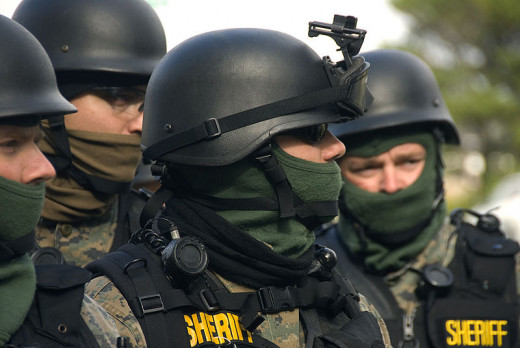
A Free Ride
When crime situations escalate to that of armed combat, hostage situations and barricaded confrontations, the SWAT team is called in. They are trained beyond that of regular uniformed police officers. They enter buildings as a military unit, take down the enemy and rescue hostages.
Many positive results have been achieved in these high-risk situations with SWAT operations, like the four-hour confrontation with the Black Panthers in Los Angeles in 1969 which resulted in zero fatalities. Fire fights directed at uniformed cops and innocent civilians grew during the 1960s and the need for trained personnel that could handle this upper tier of violent crime increased, resulting in more SWAT teams.
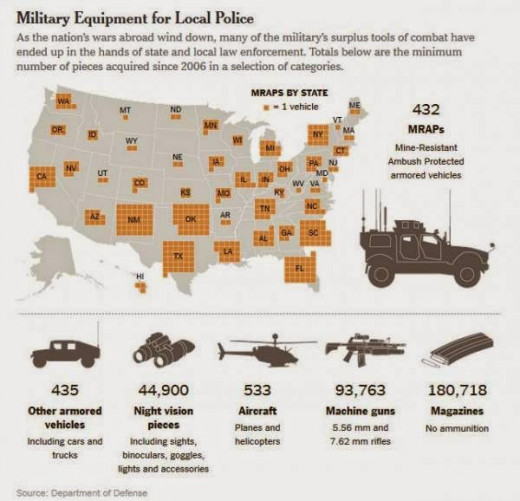
Most, if not all, SWAT operations are military-style, with some departments requiring their personnel be veterans of the armed forces. When Congress enacted the 1033 Program in the early 1990s, the Department of Defense (DoD) was given permission to send local policing agencies surplus military tools and equipment.
The National Defense Authorization Act in 1997 allowed all law enforcement agencies the chance to acquire DoD property, as long as its purposes pertained to counter-drug and counter-terrorism tactics and operations. According to the Defense Logistics Agency Disposition Services division, over 8,000 federal and state law enforcement agencies from each state and territory are participants in the 1033 Program.
The post 9/11 wars have resulted in mass technological developments in war equipment, giving local police agencies the chance to claim older, unused or retired tools from the DoD.
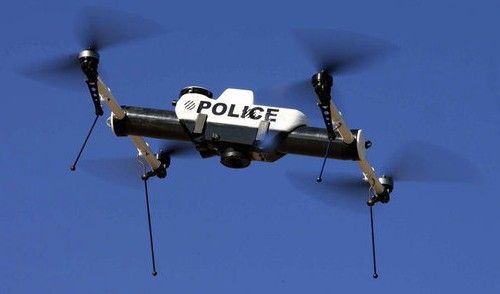
These departments receive equipment like armored personnel vehicles, mine-resistant ambush protected vehicles (MRAPs), M-16 automatic rifles, grenade launchers, machine guns, night-vision equipment, Armed Forces Battle Dress Uniforms (BDUs) and even aircraft like Blackhawk helicopters and drones, all at no cost to the policing agency.
There are billions of dollars in grants available to local police departments as well. All they need to do is write a grant stating why the agency needs something (a tank, a drone, flash grenades) and the federal government approves it.
But does the supply the police are receiving from institutions like the Pentagon and Homeland Security meet the law enforcement demands for SWAT operations? In other words, how many SWAT operations are occurring in these local police agencies, and do they really need all the weapons and vehicles they are receiving from the Department of Defense?
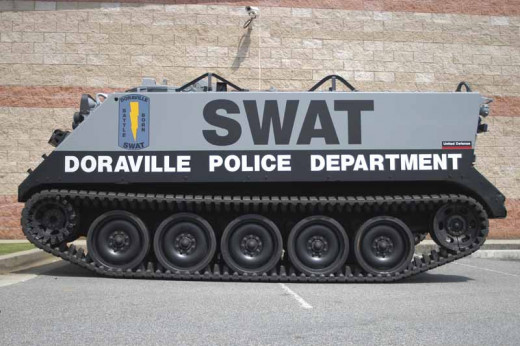
The War Hits Home
In June of 2014, a family's home was mistakenly raided by a heavily armored SRT (Special Response Team) from the Habersham County police department in Georgia. The pre-dawn operation resulted in a flash-bang grenade being thrown into the crib of a toddler, nearly killing the baby. As of August 2014, the child is in a medically-induced coma due to the severity of his life-threatening wounds.
The officers had the wrong house, and insisted that there was no evidence of children in the home. The family strongly disputed the claim, saying that there were toys in the yard outside the house and toys within.
The police had no one to arrest since there were no drugs or weapons found in the home. The official inquiry into this violent mistake is being conducted by the Georgia Bureau of Investigation, although those responsible have not been held accountable. The family has yet to be reimbursed for damages caused to their house or even towards the medical bills for the toddler. They have not received an apology from the county department either.
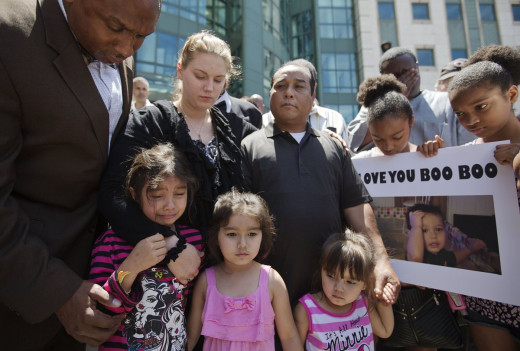

The Ferguson Riots
The death of 18 year-old Michael Brown on August 10th, 2014 in Ferguson, Missouri is, at a minimum, controversial. Fuelled by the racial differences between the mostly white police department and the minority community, the demonstrations were strong in number and their messages garnered national media attention. However, it was the police's response to the protests that has illuminated the shadows of the militarization of local law enforcement.
Racial profiling by police officers has been a major problem for minority communities for decades. African-Americans are stopped, arrested and incarcerated an exponentially amount of times higher than white Americans, followed by Hispanic and Latin Americans.
According to eyewitness accounts, the officer in Missouri demanded that Brown raise his hands after shooting the teen twice already. Brown raised his arms over his head, and the officer responded by gunning the teen down in the street.
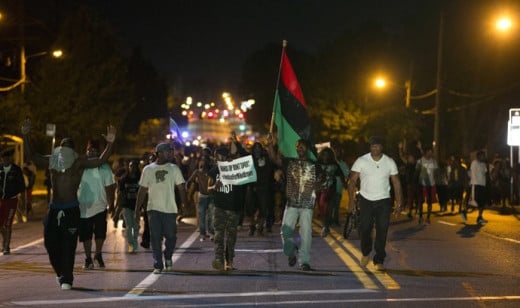
- Ferguson Police Department Releases Official Statement On Mike Brown | Global Grind
The town's police force has posted an official statement on their accounts of what happened on the night Michael Brown was gunned down.
SWAT teams in battle-dress uniforms and kevlar riot gear and tactical response officers armed with M-16s arrived in armored personnel vehicles to maintain the order during the protests. But as the days ended and the nights began, the police line moved forward as military units, firing smoke bombs, tear gas canisters, flash-bang grenades and rubber bullets into the crowds, repeating that “this was no longer a peaceful demonstration” and arresting anyone who did not move as they approached.
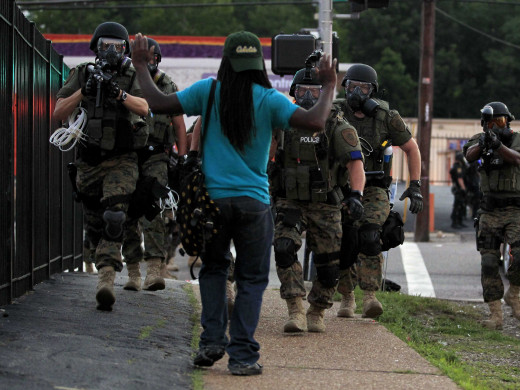
Broadcast journalists were also rounded up in the mass arrests, one television crew from Al-Jazeera America having a tear gas grenade thrown at them, forcing the group to abandon their cameras and lighting equipment. Another pair of journalists, using a McDonald's restaurant as cover during the smoke and tear bombs, were arrested after failing to comply with an officer's demands to stop recording him on their cell phones. These reporters were expressing their rights to freedom of speech and assembly and were taken to jail for it.
Do you believe the Ferguson Riots warranted a SWAT response? (Comment below if you wish to elaborate),
Lack of Training
Organizations like the American Civil Liberties Union (ACLU), state that local law enforcement that receive these military tools and equipment aren't being properly trained. The attitudes of the officers on SWAT and strategic response tact teams change when they receive such powerful and advanced weaponry. They become less connected to the people they are supposed to protect, and develop a rougher response to citizens, seeing them as enemies when conducting regular police business like issuing warrants. A knock on the door by a pair of officers is now a SWAT raid with paramilitary tactics as described in the beginning of this article.
There is a 'use of force continuum' in all fields of policing. Although a universal model does not exist, the first standards were developed in the latter half of the 20th century, with local departments establishing their own policies. The continuum is the method of response by police to the actions of citizens. These progressions of force exist to help officers deescalate tensions in a situation.

Response to Resistance
According to Sam Faulkner, the CEO of Response to Resistance, “the U.S. Supreme Court has ruled that law enforcement officers must act in an 'objectively reasonable' manner when dealing with tense, rapidly evolving situations.” His organization is dedicated to offering civilians, private security, law enforcement, corrections and military personnel defense tactics training. They aim to keep officers “safe from injury and mitigate liability in lawsuits.”
The first step in most universal response models is physical presence. A single upset citizen doesn't require a police force of 20. A group of protestors, like the hundreds that gathered in Ferguson, had a response of hundreds of riot-ready officers. The demonstrators are passively resisting the commands of officers, not physically, and so do not warrant a forceful, physical response from law enforcement.
Failing to follow direct orders, like refusing to get out of a car or put a recording camera away, is called actively resisting. The next level of action, such as the swinging of fists by a civilian towards an officer, is known as aggressive resistance. This is when officers are authorize to use non-lethal force, like night-sticks and batons, pepper spray and Tasers.
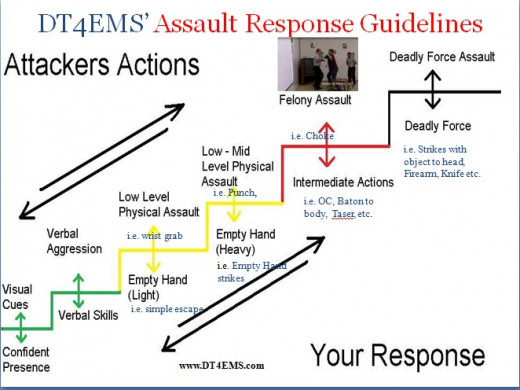
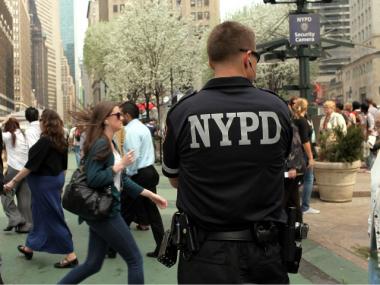
An Officer's Toll
“Officers don't want to pull their guns out,” stated a police officer in the city of Tallahassee, Florida in an interview conducted before the incident in Ferguson. Wishing to be anonymous, the officer continued, saying that “the goal is to get home each night, and if that means arresting someone or getting into a fight, then so be it.”
Although this is a personal opinion of a veteran Sargent of 15 years, its hard to imagine law enforcement officers wanting to get into violent and lethal confrontations when they have families at home worrying about them.
“[The public] isn't aware of the verbal, emotional and psychological abuse that officers experience [while on patrol],” the Tallahassee officer stated. The job is dangerous, and each night of work depends on the reactions of the citizens they encounter.
“Social media helps to create these biased looks at police,” the officer continues. “The media publishes negative issues and ignores the positive. They don't show the full story. Law enforcement is blamed first when there are mistakes [made].”
The Militarized Police
Do you think SWAT teams need military equipment to complete operations? (Comment below if you wish to elaborate on your answer).
The Real Bad Guys
In regards to the Ferguson Riots and the death of Michael Brown, the Missouri Governor placed the State Highway Patrol in charge of policing the demonstrations on the night of August 14th, and there were no riots, no tear gas, no flash-bang grenades or unlawful arrests.
As stated by the Tallahassee officer, “Bad guys already possess the stronger artillery. They use these dangerous weapons against us and the public, and the police need to stay above these criminals.”
The argument is made in favor of arming local officers with advanced weaponry, which is an agreeable perspective. The issue of when to use these tools is resulting in this national controversy over the militarization of police.
Despite the negative actions of various militarized policing agencies, there are still officers who remember what it means to protect the innocent and uphold the peace, and that is a comforting thought in a country where its becoming much harder to differentiate between soldiers and officers.
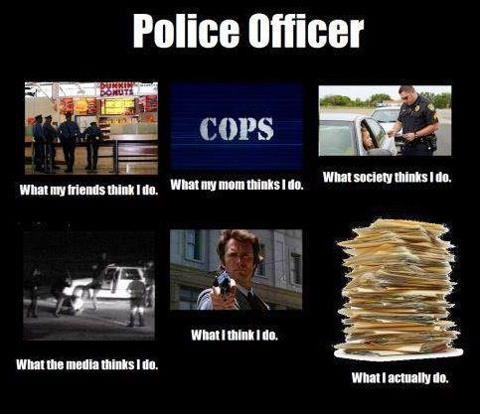
Sources:
https://www.aclu.org/sites/default/files/assets/jus14-warcomeshome-report-web-rel1.pdf
http://time.com/2907307/aclu-swat-local-police/
http://www.nytimes.com/2014/06/09/us/war-gear-flows-to-police-departments.html?_r=0
http://www.dispositionservices.dla.mil/leso/Pages/1033ProgramFAQs.aspx#q1
http://www.pbs.org/wgbh/pages/frontline/shows/drugs/cron/
http://www.responsetoresistance.com/
http://america.aljazeera.com/articles/2014/6/24/swat-aclu-militarization.html

